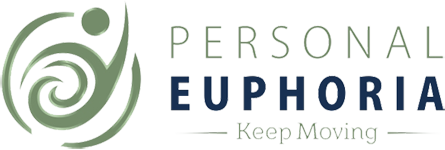I was emailed an important question the other day that I think a lot of people find confusing. The question is: If I’m supposed to keep my abdominal muscles engaged during Pilates or exercise, how do I do that and take a deep, full breath? Arguably, how do I breathe at all with my abs engaged?
The answer is you don’t. Not well anyway. When you breathe your abdominal muscles should move. They should not stay contracted, especially on a deep belly breath. Even on a lateral Pilates breathe it is not realistic to hold your abs in when you inhale.
Not sure you know what the lateral Pilates breath is? Check out this video before you continue reading:
So here are some tips to hopefully help you breathe, but remain connected with the abdominals (or take better advantage of how they should interact with your lungs and diaphragm):
- On every inhale allow the abdominals to relax as you take in air. Use the exhale as a reminder and opportunity to reconnect with them. Very often, especially when you are new to Pilates you should hear an instructor cue you: “Inhale. Engage the abs, exhale and move.” That’s the order it should come. Our ultimate goal is to have you reconnect with your abs when you breathe out, but realistically they will not and should not be engaged 24/7. Since on a deep exhale your abdominals should engage anyway, that is a good time to make sure you have control, awareness and connection.
- In Pilates when we talk about engaging the abs, we are referring to the transversus, not the obliques. That doesn’t mean we don’t engage or connect with the obliques in a Pilates class. We do, but the concepts of scooping, zipping the jeans or drawing the navel to the spine that are so typical of Pilates all refer to the transversus (the deepest layer of ab muscles that are under your rectus (six pack) and obliques.
- Be gentle. Make sure when you do engage the transversus that you aren’t sucking in as deep as you can. This engagement should be subtle, mild. I think sometimes as instructors we can make it sound like a bigger move because we are trying to get you to feel and become aware of something that is really hard to connect with. Think less is more. You just want your skin to feel taut. If sucking in as hard as you can is a level five. Try to engage to a level two at most. Do less and you might find it easier to breathe.
- The lateral Pilates breath is going to move the obliques. No way it can’t. It’s actually working the obliques. But while your transversus or lower abs will probably still release on an inhale, lateral breath allows you to keep your abs engaged a little more than a belly breath. That’s why Pilates chooses that method. That doesn’t make it better or worse than another style of breathing. All types of breath are important…even little staccato breaths. It’s never all or nothing.
- Experiment with a variety of breathing styles. Try big belly breaths that completely relax your abs. Try lateral breaths and see how much you need to move your abs. You shouldn’t feel tension. Try 3-D breaths where you expand your ribs front-to-back, side-to-side and up and down so even your Kegels get involved. I think those feel fabulous. Like any other movement style or part of the body, variety is key to remaining balanced and healthy.
Have fun playing with the body, and I hope this helps. Please let me know if it answered your question. I appreciate the question because I think a lot of people (perhaps even some instructors) are confused about this concept and Pilates gets a bad rap if this concept is misunderstood. Pilates should NOT teach us to suck in and tense our abs all day every day. Instead it should help us connect with what I like to call our sling of support throughout the day.

Thank you so much for this. I have been having a huge struggle breathing while keeping my muscles engaged. I know that I am looking to strengthen and flatten my core– not just get a stronger, more protruding mid-section. I will take your recommendations to engage on the exhale and experiment with the results of different types of breathing. Thanks again.
Thanks for reading. Good luck with your practice.